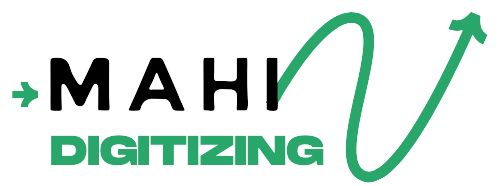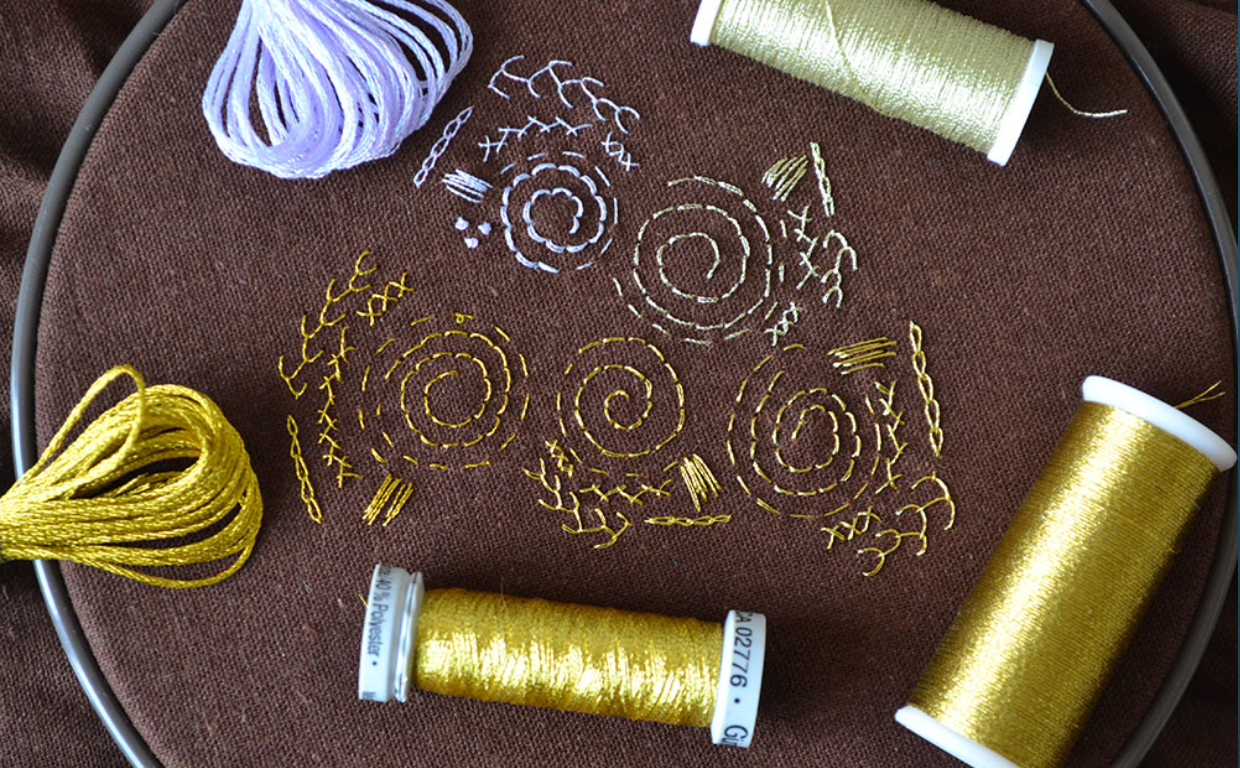Metallic embroidery delivers elegance and shine, but it requires precision in digitizing to avoid thread breakage or poor definition. At Mahi Digitizing, we specialize in preparing stunning metallic designs that are optimized for both aesthetics and production quality.
Understanding Metallic Thread Behavior
Metallic threads are visually impressive but also more fragile than polyester or rayon threads. Their foil-like outer layer can snap or fray during fast, dense stitching.
These threads have less flexibility, so they don’t handle tight curves and dense fill areas as well as standard threads do.
It’s important to study how the thread interacts with both fabric and machine settings before finalizing your embroidery file.
Choosing high-quality metallic threads—such as Madeira FS or Robison-Anton—can help reduce stitching problems and deliver better shine.
Before digitizing, ensure your embroidery machine is well-maintained and calibrated for metallic work to avoid tension issues.
Metallic thread runs best with slower speeds, larger needles, and longer stitch lengths to preserve the foil wrap during execution.
We at Mahi Digitizing take these properties into account during every stage of the digitizing process.
Start with Simpler, Bold Designs
Metallic thread shines best in simple, bold artwork. Thin lines and intricate details often lose clarity due to the thread’s reflective surface and reduced pliability.
Designs should include open spaces and avoid high-density fill to allow the thread to lay smoothly and reflect light evenly.
Thick fonts, logos, borders, and accent elements are ideal choices for metallic execution.
Maintain a balance between visual impact and technical feasibility—metallic threads can’t match the fine detail of polyester thread without risk.
Reducing design complexity also helps lower production errors and machine downtime from thread breaks.
We often suggest slightly enlarging fine details to accommodate the nature of metallic threads without losing design integrity.
Want help preparing artwork? Get a quote and let our expert digitizers assist in modifying your vector files for metallic use.
Optimize Stitch Length and Density
Using longer stitches—usually between 3 to 4mm—can reduce friction and prevent thread shredding during embroidery runs.
Avoid short, overlapping stitches or small satin fill areas, as these increase wear on the metallic wrap and cause breakage.
Decrease density slightly (usually around 0.40 mm) to give metallic thread enough breathing room and reflectivity.
Underlay stitches should be light and supportive without creating bulk—zigzag or edge walk underlays work best here.
This not only stabilizes the design but also ensures the top metallic thread rests well on uneven fabric textures.
If your design includes tight corners or sharp curves, consider segmenting or smoothing the lines to reduce tension stress.
Our experienced team tailors each file’s stitch parameters based on the thread type and design complexity for optimal performance.
Use the Right Needle and Machine Settings
Needle choice matters. Use a larger, eye-friendly needle like #90/14 metallic or topstitch needles to reduce abrasion and shredding.
A slower embroidery machine speed—typically between 400–600 stitches per minute—is ideal for metallic thread runs.
Ensure even tension settings across the bobbin and top thread. Tension that’s too tight may snap the thread mid-run.
Using thread stands or nets can help feed metallic threads smoothly into the machine and reduce kinks.
Don’t combine metallic threads with high-speed designs or dense fill objects unless you’ve optimized the file accordingly.
Test each design in production on your selected fabric to confirm the visual quality and machine compatibility before mass production.
Need setup help? Contact us for custom digitizing support tailored to your embroidery machine and thread brand.
Proper Placement of Metallic Accents
Rather than making the entire design metallic, consider using these threads for key highlights, borders, or layered outlines.
Strategically placing metallic accents adds sophistication without overwhelming the garment or risking overuse of fragile thread.
Contrast between matte polyester and shiny metallic can create a balanced, visually dynamic embroidery outcome.
This hybrid approach is common in fashion, luxury branding, and ceremonial wear where subtle glamor is key.
Even minimal use of gold, silver, or iridescent metallics can increase the design’s value perception and brand impact.
Let your digitized design guide the needle—not the other way around—by thoughtfully directing where metallic accents should appear.
View samples in our portfolio to see examples of beautifully blended metallic accents.
Test, Adjust, and Document
Testing is the final and most crucial part of digitizing for metallic threads. One small adjustment can prevent future production issues.
Run initial tests on similar fabric and under real production conditions before going into bulk stitching.
Note any problems like puckering, shredding, thread looping, or misalignment—and trace these back to your digitized file settings.
Make small tweaks to stitch length, pull compensation, and density before running a second test for confirmation.
Document your machine settings, thread type, and stabilizer for future consistency and replication across similar projects.
This documentation helps streamline your next order and ensures your client receives flawless results every time.
Mahi Digitizing provides tested, ready-to-run metallic designs to simplify your workflow.
Conclusion
Digitizing for metallic embroidery is both an art and a science—done right, it results in luxury-grade apparel that catches every eye.
Understanding thread behavior, simplifying design elements, and adjusting stitch properties all play a role in achieving stunning results.
Choosing the right needle, speed, and testing protocols can significantly increase quality and production efficiency.
Whether for fashion, corporate branding, or promotional apparel, metallic embroidery adds unique value and sophistication to any project.
Trust Mahi Digitizing for precision-engineered embroidery files that are production-ready and sparkle with excellence.
Request a quote today and transform your vision into brilliant, shimmering embroidery.
Let your creativity shine—backed by professional digitizing that delivers both flair and function.

